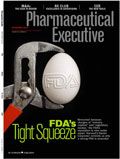Regional Marketing, National Growth
Pharm Exec sits down with an expert on regional marketing to ascertain what it takes to drive strong brand results
Pharm Exec: There are many changes in the healthcare industry these days, leading to more pressure on sales and marketing budgets. How do you recommend pharmaceutical executives attack the evolving market?
Jeffrey Spanbauer: First, healthcare reform is bringing approximately 32 million previously uninsured consumers into the process. Government oversight will become even more of a factor, and cost containment will be even more critical. Second, focus on ROI is not just for the big picture, but for all marketing programs—where should I spend my next dollar? Third, we're facing other market factors, such as access to physicians, that change the way we do business in healthcare. These factors lead to more scrutiny of budgets. We need a more in-depth view of the marketing mix, making sure we gain the most impact for the programs we fund. This evolving market makes us view healthcare in a whole new light.

Jeffrey Spanbauer
PE: I am hearing "regional marketing" a lot these days—what is regional marketing?
JS: We define regional marketing as targeted allocation of resources to markets for the greatest return on investment. It is an important part of the marketing mix and can help brands optimize their spending to achieve the best returns.
PE: What are the forces that are driving the need for regional marketing?
JS: The main drivers are the need for rapid response to market conditions and the need for better ROI. Also, there's a need to address the variability across markets, such as different demographics or managed care situations, making districts even within the same states very different. Back in the day, a blockbuster brand could afford to do "one-size-fits-all" marketing—they had lots of representatives and plenty of budget, so if the tactics didn't work in all markets, it was ok. But in today's environment, brands have tighter budgets, so tailoring strategies and tactics to market drivers allows for increased ROI.
PE: When is regional marketing important?
JS: Regional marketing is important when a product has variability at a geographic level. We have analyzed and worked with brands in over 30 disease states and we typically see significant product variability in market share and volume per 1,000 people. The variability is usually 200 percent from the top-performing district to the lowest one, but can be as high as 400 percent.
PE: What drives this variability?
JS: We have identified six "drivers" of product variability. We call them the "Six P's." They are: "Population," which deals with demographics; "Prescriber," which focuses on physicians; "Provider," focusing on entities administering the healthcare, such as managed care, hospitals, and clinics; "Payer," which deals with who pays, such as the government or employers; "Product," dealing with competition; and finally, "Place," which covers Field Force dynamics and regional legislation.
PE: There is a perception that it's all about managed care—if you are on second tier you are golden. What else is there to know about each market?
JS: In today's environment, it is never that easy. It really depends on the product and category, and we've found that it actually depends on all the Six P's. We have seen many instances where brands have some markets with Tier 2 access and some with Tier 3. We've seen Tier 2 markets have the same or lower market share than Tier 3 markets. I know this drives brand managers and managed market folks crazy ... that is why we need to look at all Six P's.
PE: When a growth brand is currently winning, why would it need regional marketing?
JS: An incremental script is worth a lot of future revenue and profit ... so growing a brand even faster is always a great idea. The opportunity is finding the markets where the brand can grow even more, and deploying the right resources to those markets.
Jeffrey Spanbauer is a founding Principal at Healthcare Regional Marketing in Cincinnati. He can be reached at jspanbauer@hrmexperts.com
The Misinformation Maze: Navigating Public Health in the Digital Age
March 11th 2025Jennifer Butler, chief commercial officer of Pleio, discusses misinformation's threat to public health, where patients are turning for trustworthy health information, the industry's pivot to peer-to-patient strategies to educate patients, and more.
Navigating Distrust: Pharma in the Age of Social Media
February 18th 2025Ian Baer, Founder and CEO of Sooth, discusses how the growing distrust in social media will impact industry marketing strategies and the relationships between pharmaceutical companies and the patients they aim to serve. He also explains dark social, how to combat misinformation, closing the trust gap, and more.
